
Filter News
Area of Research
- (-) Energy Science (170)
- (-) Supercomputing (104)
- Advanced Manufacturing (22)
- Biological Systems (1)
- Biology and Environment (45)
- Building Technologies (1)
- Computational Biology (2)
- Computational Engineering (3)
- Computer Science (8)
- Electricity and Smart Grid (1)
- Functional Materials for Energy (1)
- Fusion and Fission (11)
- Fusion Energy (3)
- Isotope Development and Production (1)
- Isotopes (27)
- Materials (118)
- Materials Characterization (1)
- Materials for Computing (20)
- Materials Under Extremes (1)
- Mathematics (1)
- National Security (34)
- Neutron Science (51)
- Nuclear Science and Technology (11)
- Quantum information Science (2)
- Transportation Systems (2)
News Topics
- (-) 3-D Printing/Advanced Manufacturing (81)
- (-) Artificial Intelligence (42)
- (-) Biomedical (22)
- (-) Cybersecurity (14)
- (-) Isotopes (2)
- (-) Materials Science (40)
- (-) Mathematics (4)
- (-) Summit (44)
- (-) Transportation (70)
- Advanced Reactors (7)
- Big Data (27)
- Bioenergy (29)
- Biology (19)
- Biotechnology (6)
- Buildings (39)
- Chemical Sciences (16)
- Clean Water (8)
- Composites (17)
- Computer Science (108)
- Coronavirus (25)
- Critical Materials (12)
- Energy Storage (74)
- Environment (69)
- Exascale Computing (27)
- Fossil Energy (2)
- Frontier (32)
- Fusion (2)
- Grid (41)
- High-Performance Computing (44)
- Hydropower (3)
- Machine Learning (20)
- Materials (45)
- Mercury (3)
- Microelectronics (1)
- Microscopy (14)
- Molten Salt (1)
- Nanotechnology (15)
- National Security (11)
- Neutron Science (20)
- Nuclear Energy (11)
- Partnerships (12)
- Physics (8)
- Polymers (13)
- Quantum Computing (20)
- Quantum Science (26)
- Security (10)
- Simulation (18)
- Software (1)
- Space Exploration (6)
- Statistics (1)
Media Contacts

Subho Mukherjee, an R&D associate in the Vehicle Power Electronics Research group at the Department of Energy’s Oak Ridge National Laboratory, has been elevated to the grade of senior member of the Institute of Electrical and Electronics Engineers.
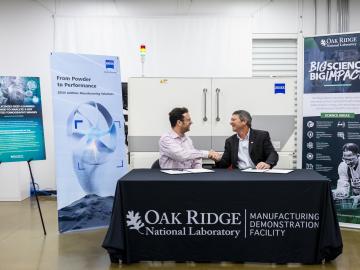
A licensing agreement between the Department of Energy’s Oak Ridge National Laboratory and research partner ZEISS will enable industrial X-ray computed tomography, or CT, to perform rapid evaluations of 3D-printed components using ORNL’s machine

ORNL hosted its fourth Artificial Intelligence for Robust Engineering and Science, or AIRES, workshop from April 18-20. Over 100 attendees from government, academia and industry convened to identify research challenges and investment areas, carving the future of the discipline.

Yarom Polsky, director of the Manufacturing Science Division, or MSD, at the Department of Energy’s Oak Ridge National Laboratory, has been elected a Fellow of the American Society of Mechanical Engineers, or ASME.

Wildfires have shaped the environment for millennia, but they are increasing in frequency, range and intensity in response to a hotter climate. The phenomenon is being incorporated into high-resolution simulations of the Earth’s climate by scientists at the Department of Energy’s Oak Ridge National Laboratory, with a mission to better understand and predict environmental change.
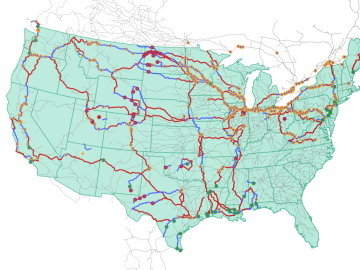
Oak Ridge National Laboratory researchers used images from a photo-sharing website to identify crude oil train routes across the nation to provide data that could help transportation planners better understand regional impacts.
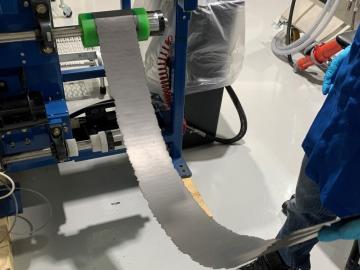
Early experiments at the Department of Energy’s Oak Ridge National Laboratory have revealed significant benefits to a dry battery manufacturing process. This eliminates the use of solvents and is more affordable, while showing promise for delivering a battery that is durable, less weighed down by inactive elements, and able to maintain a high capacity after use.
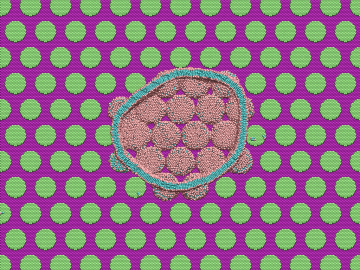
Over the past decade, teams of engineers, chemists and biologists have analyzed the physical and chemical properties of cicada wings, hoping to unlock the secret of their ability to kill microbes on contact. If this function of nature can be replicated by science, it may lead to products with inherently antibacterial surfaces that are more effective than current chemical treatments.
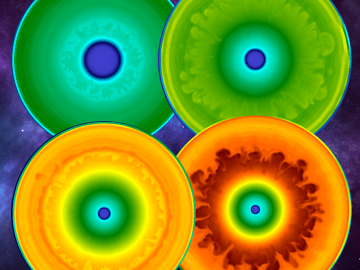
As a result of largescale 3D supernova simulations conducted on the Oak Ridge Leadership Computing Facility’s Summit supercomputer by researchers from the University of Tennessee and Oak Ridge National Laboratory, astrophysicists now have the most complete picture yet of what gravitational waves from exploding stars look like.

Scientist-inventors from ORNL will present seven new technologies during the Technology Innovation Showcase on Friday, July 14, from 8 a.m.–4 p.m. at the Joint Institute for Computational Sciences on ORNL’s campus.


